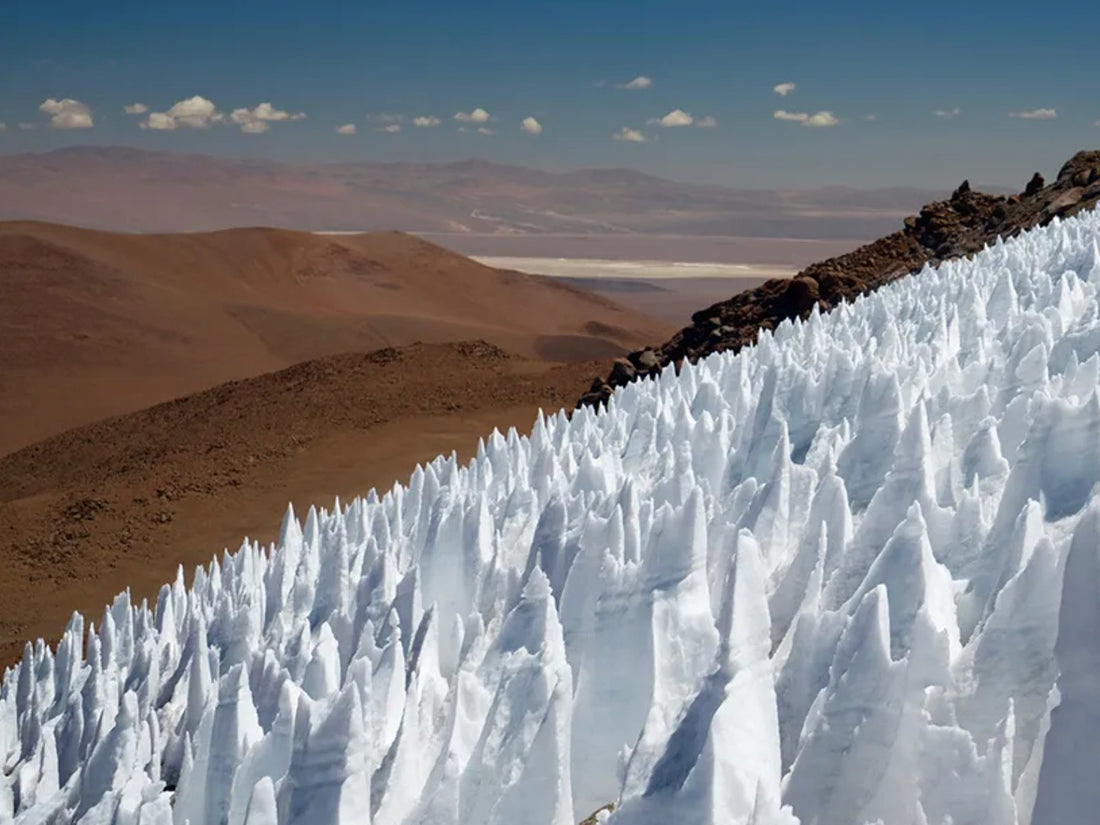
Where to go mountaineering in April
Share
It’s spring ski touring season in northern America and Europe this month, but if you’re after higher and more remote mountaineering objectives then look a little further afield.
Here are our suggestions for where the best mountaineering can be found this month, but as always, you’ll need to check up to date information regarding access and logistics, particularly for those areas subject to geo-political tensions (and volcanic activity!). Here’s a little inspiration for the month of April. And if not this year, why not next?
Asia
April heralds the start of the main climbing and trekking season in Nepal and Tibet, with the big expeditions headed for Everest, Lhotse and Makalu aiming to summit in May allowing for acclimatisation and an appropriate weather window. This is the pre-monsoon season, with generally warmer temperatures than later in the year (after the monsoon), although the weather patterns can be quite variable and a lot depends on the strength of the wind and the amount of snowfall.
There are a number of so called ‘trekking peaks’ which shouldn’t be underestimated (the name comes from a classification used to issue peak permits). Island Peak, Mera Peak and Lobuche are good introductions to climbs of around 6000m altitude with lower technical difficulty, but they still involve steep snow and require decent warm gear. They all lie off the main trail to Everest Basecamp, which can get very busy with both trekkers and climbers but on the plus side you might get to rub shoulders with your climbing heroes over dinner in the tea houses.
For those wanting something with more technical terrain, Kyajo Ri (6186m) is in a less visited valley north of Namche Bazaar, and has a satisfyingly ‘pointy’ summit with a mixture of glacier, steep snow and rock on the ascent. For even more technical climbing, slightly higher again, there’s also the fantastic Ama Dablam (6812m) which can’t be missed from the upper Khumbu valley.
For climbers with more experience at altitude looking to break the 7000m threshold, then Himlung Himal (7125m) in the Annapurna region near the Tibetan border is becoming quite popular. This is in part thanks to it being objectively quite safe, and technically fairly straight forward which makes it a good place to test your tolerance of very high altitude. The same is true of the slightly higher Annapurna IV (7525m).
If you’re serious about aiming for the world’s highest peaks, then there are ‘only’ 14 summits which lie above 8000m. April is the start of the approach and acclimatisation phase for expeditions planning to climb Everest (8848m), Lhotse (8516m) and Makalu (8485m) in Nepal, as well as Dhalugiri (8167m). There’s also Kanchenjunga (8586m) which lies on the border between Nepal and India, and over in Tibet lies Shishapangma (8013m). Although the lowest (and sometimes considered easiest) of the 8000ers, being entirely in Tibet can mean it is difficult to obtain a permit to climb.

Dhalugiri rising 7000m from the valley floor (Credit: NASA Earth Observatory image by Jesse Allen and Robert Simmon)
South America
April is a bit of a between-season month in South America, being either very early or the end of the season (depending on the region). Conditions will vary from year to year, so it’s worth keeping up to date with recent trip reports for the area you’re considering travelling to and have an open mind in case you need to adjust your plans. That being said, some of the volcanic summits can be climbed pretty much all year round.
This month is the tail end of the season for alpine peaks up to around 5000m in the Sierra Nevada of Venezuela. The snow and ice covered volcanoes such as Nevada Santa Isabel and Tolima in Columbia may also still be climbable, and start off in the jungle for a diverse climatic experience.
The Puna de Atacama area in Northern Chile/Argentina has the highest concentration of peaks over 6000m in the whole of the Andes, but its remoteness has left it relatively under explored. Although April is past the peak season (which is the South American summer), it’s still possible to climb; although temperatures will be a little lower, the benefit is that water availability may be a little better. The most well-known peak is Ojos del Salado(the highest volcano in the world at 6893m, and the second highest peak in the Andes), but you will require a special permit if you want to climb it after 31st March as that is the end of the ‘official’ season.
The Cordillera Occidental is an enormous chain of mountains that runs all the way from Columbia to Chile. April is the very start of the season for the volcanic peaks in the region that span the borders of Peru, Bolivia and Chile. Incredibly, evidence of ascents made by the Inca has been found as high as 6000m on peaks like Nevado Coropuna in Peru.
The highest peak in this region (and in Bolivia) is Nevado Sajama at 6542m, which is snow covered and can have extremely tall penitentes (fascinating pillars of sun eroded ice).

Penitentes: ice tower formations found in the Andes. (Photo: Graham Zimmerman)
Further south the Andean Lake District spans the Argentina/Chile border with an abundance of forests and (you guessed it) lakes surrounding a mixture of volcanic and snow-capped peaks of between 3000 and 4500m. Most are technically straight forward ascents, some which are done-in-a-day whilst others can take a couple of days (Volcan Lanin for example). The weather is often the most challenging aspect of mountaineering in this area, with it not uncommon to experience what feels like four seasons in one day!
Africa
Winter still clings to the High Atlas at this time of year, with alpine objectives just about still possible. There are a number of worthwhile 4000m peaks in addition to Toubkal, with a variety of rock, snow/ice and mixed routes at fairly amenable grades such as the traverse of Biguinnousenne (4002m).
Australasia
The equatorial region starts coming into the ‘drier’ season in April (a relative term, it’s still likely to be tropical and somewhat wet!). Carstenz Pyramid (4884m) is arguably the most technical of the Seven Summits, with plenty of rocky scrambling terrain and often a tyrolean traverse required to reach the top. Over in Malaysia, there are plenty of other interesting rocky peaks including Mount Kinabalu on the island of Borneo which are climbable.
So there you have it, there’s plenty of mountain adventures to be had around the world in April.
